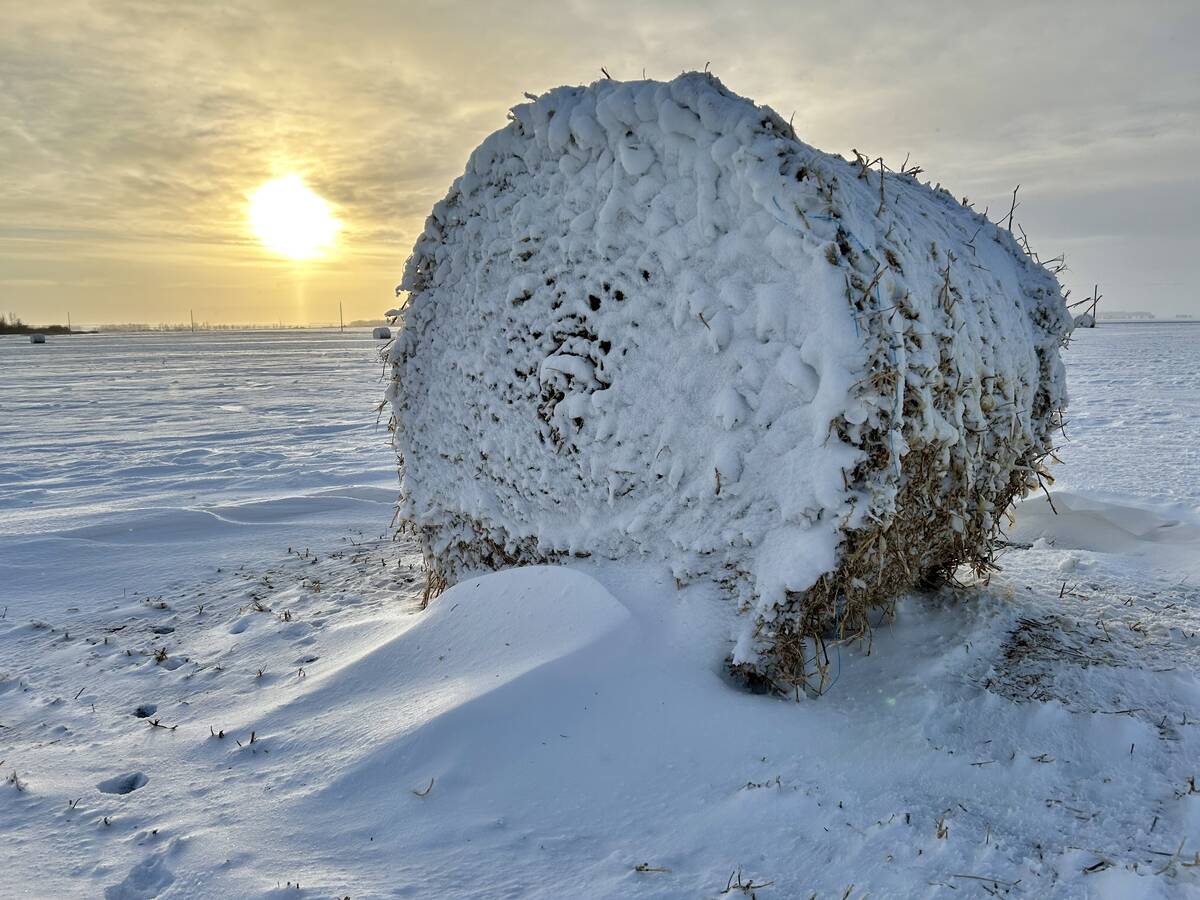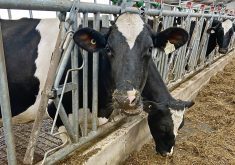Only small gains were experienced by canola contracts on the ICE Futures Canada platform during the week ended Aug. 31, although values did push towards highs not seen in some time.
Talk of lower-than-expected yields as the canola harvest advances across the Canadian Prairies provided some of the upward momentum as did the continued push to new all-time highs in CBOT soybean futures.
A jump in demand from domestic processors helped to generate support for canola, as did a slowdown in farmer deliveries into the cash pipeline. The drop in farmer movement was seen coming at a bad time, especially when the commercial elevator system is preparing to move large levels of canola to the West Coast to meet record export commitments over the next three months or so.
Read Also

Prairie winter snowfall forecast 2025-2026
How much snow should farmers in Alberta and elsewhere on the Canadian Prairies expect for the rest of December 2025 and into January-February 2026?
Any drop in farmer sales should in turn translate into some upward price movement in the cash pipeline until these commitments have been filled. There has also been a lot of talk of how canola is lagging the rally seen in CBOT soybeans, and in fact some feel the spread between the two, once the currency exchange between the two is removed, has widened to such a point, that canola is almost at a near-record discount rate to soybeans in the U.S.
Normally canola trades at a premium to soybeans. Some have calculated canola’s discount to soybeans in the US$3.18-a-bushel range, and are of the belief that before the dust settles, the spread will widen to the US$3.50- or even US$4-per-bushel area.
Right now the key to the strong premium soybeans have over canola is tied to the meal. There are few substitutes for soybean meal in the feed system, with the crush of the soybean providing a higher meal content than oil. With canola the opposite holds true.
However, with canola trading at such a discount, international end-users are expected to take notice, which in turn should attract even more attention to the commodity and help narrow that spread to some degree.
These end-users will be looking to canola for the oil content, with meal not the issue. The Sept. 7 stocks in all positions report (issued after this issue’s deadline) from Statistics Canada were expected be a factor in which market participants, who trade canola, will be watching closely.
Some wheat, no durum or barley
The milling wheat contract on the ICE Canada platform continued to see action during the reporting period with commercials again the main participants. Some realigning of the October-December spreads was evident.
No actual trades were reported in the durum and barley contracts. In fact, the new barley contract has not seen any actual trades since the beginning of August.
Soybean futures at the CBOT pushed to new highs during the week with the strength continuing to be influenced by the fact that supplies of the commodity in the U.S. and across the globe are in short supply.
News during the reporting period that U.S. soybean yields will be lower than anticipated, also added to the upward momentum. The steady rise in soybean futures also reflected the strong demand that is coming from the export and domestic sectors, despite the record-high prices.
China and Taiwan appear to desperately need soybeans and are paying up at these values in order to secure supplies. However, there have been some suggestions that China will likely end up cancelling some of these purchases sometime before Christmas when alternative soybean supplies become available.
The domestic crush pace in the U.S. also does not appear to be slowing down, with these processors trying to lock up enough stocks in order to meet the meal demand component. The taking of profits and the need to undergo downward corrections prevented CBOT soybeans from making a straight line to higher-price territory.
Some boost from Isaac?
Sentiment that some of the precipitation from Hurricane Isaac, lately reduced to a tropical storm, would benefit some late-seeded soybeans or the double-seeded soybean crops, further limited some of the price strength. Corn futures on the CBOT again moved to both sides of the plus/minus line during the reporting period.
The commodity was left mostly to the mercy of the price movement in both wheat and soybeans, although the tight supply situation did keep a firm floor under values.
Demand for U.S. corn from the domestic and export sectors continues to be non-existent, which in turn restricted the upward price action. There continues to be all kinds of stories about the U.S. livestock industry turning to Western Canada in order to fill feed requirements. With the price of U.S. corn these days, they are finding it cheaper, even with the transportation cost factored in, to bring in the Canadian feed.
The enquiries from the U.S. are just not confined to a Canadian province, but have been reported in all three. Wheat futures on the CBOT, MGEX and KCBT experienced a push to the upside during the week, with some of that upward price action linked to values correcting after a series of declines. Some of the upward price action in U.S. wheat values also came from speculation that the Russian government would suspend its wheat export program on Aug. 31 at a special meeting.
The suspension of that country’s exports was linked to the production problems with its wheat crop. The rumours in turn sparked a rally in wheat values, as wheat importers would then have to turn to the U.S. to fill needs. However, being true to form, the meeting on Aug. 31 came and went, with the Russian government deciding there was no need to curtail its wheat export program.
The advances in U.S. wheat values in turn were promptly reversed. The arrival of much needed precipitation in the U.S. Winter Wheat Belt further restricted the upside in wheat futures. The rain was timely, coming just ahead of the planting of the U.S. winter wheat crop.














